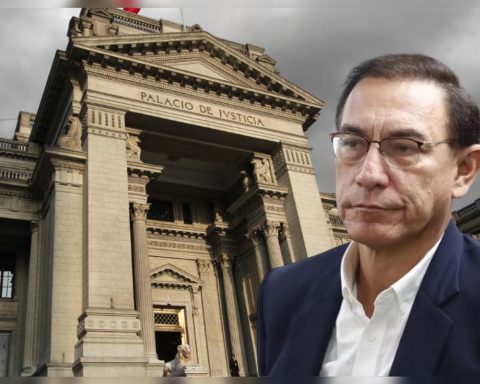Peru is at a strategic moment for international trade: It has more than 20 commercial agreements and is close to inaugurating the Chancay megaport and the new terminal of the Jorge Chávez International Airport. In this context, the Special Private Economic Zones (ZEEP) They emerge as a tool to take advantage of these competitive advantages. Juan Carlos Mathews, Vice President of Internationalization of the USIL and former Minister of Foreign Trade and Tourism, explains the advantages of ZEEPs in the context of the debate in Congress on a new regulatory framework for these zones.
LOOK: Martín Pérez: “Japan wants to expand investment in Peru”
Why is it important that Peru has a ZEEP?
From experience in other countries, we know that SEZs promote industries mainly oriented to export. Given that port and airport projects are being developed in Peru, one way to get the most advantage is through these areas. Although we already have some, they barely generate exports of about US$78 million.
Why have the economic zones we have not worked?
The main obstacle is the location in relation to logistics, which makes it not convenient for companies to go to those areas. For example, an agroindustrial company decides to establish itself in a SEZ in Ilo, but at the same time it realizes that the inputs it brings from Europe do not arrive through Ilo, but through Callao. This will result in you having to pay additional freight to your location. Then, when exporting your final product, you realize that you must take it back to Callao, causing another transportation expense. Another factor is that these areas are currently managed by the State, and experience in other countries shows that they tend to be more efficient under private than public administration.
If the law is approved in Congress, what will happen to the areas we have now?
The initially agreed conditions will be respected, but over time, competition could cause companies to opt for alternatives that are more convenient for them.
What sectors would benefit the most from the standard?
In some countries they orient it to some particular industries, for example, technology. In the case of Peru, there will be freedom for any sector, whether industrial, fishing or any other type, to establish itself. This gives business owners the option to decide what suits them best. What I can say is that, in the midst of some discouraging news for the country, this is good news. The Callao-Chancay binomial will become an important operations center.
How can the Port of Chancay be used for ZEEPs?
Chancay will undoubtedly be a space for the areas because it meets the requirements such as proximity to ports and airports, good connectivity and a series of advantages. Industries that use the port to export to the Asian market can be installed there, attracting investments from various parts of the world. It is the ideal time for investment from the United States, South Korea and Europe to settle in Peru, having the Free Trade Agreements (FTA) as an extra advantage.
The Congress proposal proposes that the Income Tax rate for companies in these areas be 15%, is it enough?
For many, the fact that ZEEPs are born with a 15% tax could condemn them to failure, when compared to other countries. Why would they invest in Peru with a rate of 15% when in Colombia, Uruguay or the Dominican Republic it is 0%? It is important to understand that these zones generate economies of scale and synergies between industries.
Some consider that a 15% Income Tax rate could cause Peru to suffer losses, what is your opinion?
I doubt it, because we are talking about investments that do not exist in the country today. What reaches these areas will be new investment that will contribute to national growth. Furthermore, the positive impact can be measured through the multiplier effect on the Peruvian economy and the creation of direct and indirect jobs in sectors such as transportation. It is necessary to analyze it with a long-term vision, considering that we compete with other countries. For example, Peru is a copper producer, but it is not the only one; we have competitors like Chile and the Congo.
How will this multiplier effect materialize?
When it comes to exports, each exporting company involves about 7.4 additional companies in its value chain. If we look at the average number of employees that each of these companies has and the families that depend on them, the impact is significant. ZEEPs move billions of dollars.
Does the presence of these spaces affect the local industry?
Not at all. The idea is that these zones focus on export-oriented industries, without harming companies that pay taxes in the country.
Take advantage of the NEW EXPERIENCE, receive our enriched digital newspaper by mail and WhatsApp. Peru21 ePaper.
Now available in Yape! Find us at YAPE Promos.
RECOMMENDED VIDEO

















